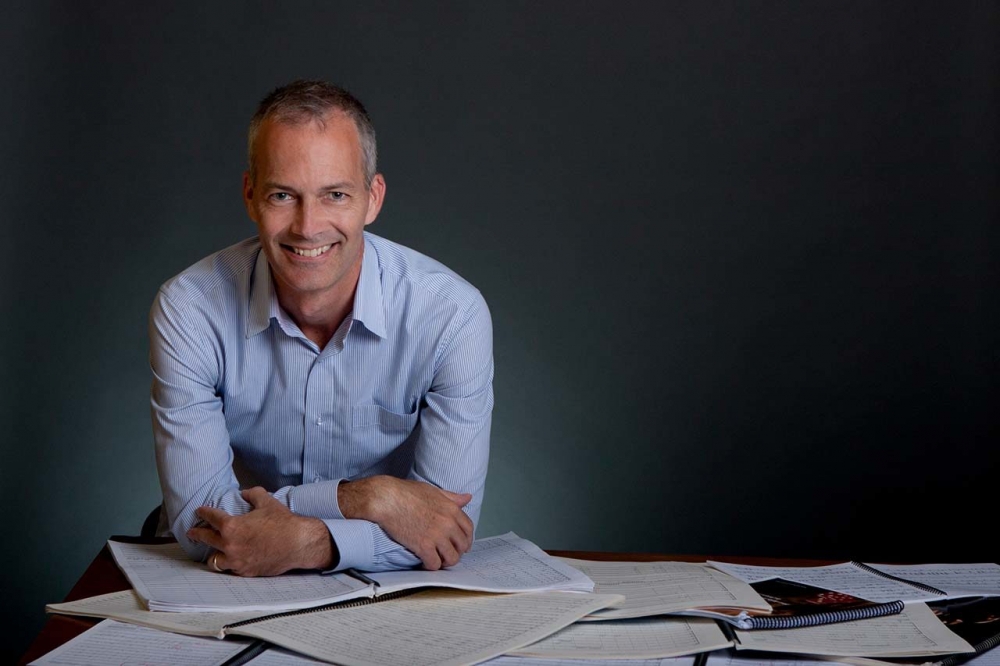
Science Meets Music
They make for an unusual blend of musical instruments — the clarinet, oboe, piano, violin, harp, trombone, and a Persian percussion instrument called the tombak. But in Cocoon, a new work by acclaimed composer James Stephenson, they create an ensemble that he said reflects what he learned at UC Santa Barbara’s National Center for Ecological Analysis and Synthesis (NCEAS) — itself a place where unusual combinations of scientists convene and collaborate on complex questions about the natural world.
“It’s a piece like no other I have ever written,” said Chicago-based Stephenson, who spent time as an artist-in-residence at NCEAS. “Writing for and about science was extremely energizing for me.”
Cocoon will have its world premiere Friday, July 19, at 7:30 p.m. at the Music Academy of the West in Santa Barbara as part of its 72nd anniversary Summer School and Festival. Attendees are also invited to attend a pre-concert lecture on the work from 6:45 to 7:15 p.m.
Science and music meet in the composition, which is based on Stephenson’s experience at NCEAS. His residency was also supported by the Music Academy and The Squire Foundation. A Music Academy alumnus, Stephenson attended in 1988 and 1991 as a trumpet fellow, and he joined the Academy again for the 2018 Summer School and Festival as a composer-in-residence.
Stephenson described the piece as exploratory, interactive and communicative, with each instrument offering its own melody and others commenting in response, and concluding in a melodic synthesis. The musical process mimics the kind of scientific synthesis that happens at NCEAS, which Stephenson described as “a cocoon of ideas that grow, metamorphose and will eventually change our world.”
Cocoon’s debut will include a moderated discussion between Stephenson and NCEAS Executive Director Ben Halpern, who also is a professor at the Bren School of Environmental Science & Management.
“The parallel between composing and performing chamber music with a range of instruments and developing and executing research with a group of scientists from different disciplines is striking in its obviousness, yet something I had never thought about until interacting with Jim,” Halpern said.
By facilitating interactions between artists and scientists, the artist-in-residence program at NCEAS is designed to expand the ways scientists contemplate, investigate, and communicate about the natural world while exposing artists to scientific processes and ideas.
“I’m hoping these interactions produce new insights into pressing scientific questions and new, creative artistic expressions,” said Halpern.
Fellows from the Academy will perform Stephenson's new work, which he said enabled him to write the piece with a depth and virtuosity he knew they could undertake while also making the piece accessible for subsequent ensembles.
“I hope that the result for those who are listening equals the excitement I had in creating it,” he said.
Tickets for the premiere are $10 to $40. Admission is free for those ages 7 to 17 when accompanied by a ticketed adult.



